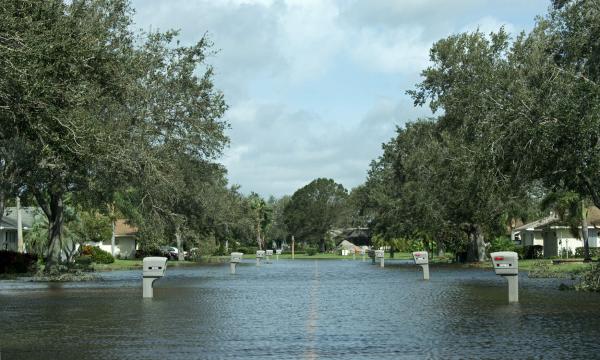Sept. 11 (UPI) — Tropical Storm Irma lashed Jacksonville, Fla., on Monday with steady rain and 50 mph wind gusts after leaving millions in the state without power overnight, weather officials said.
The National Weather Service issued a flash flood emergency along the St. John‘s River, warning that flood waters, currently at their highest level in history, could rise further. A storm surge flooded Jacksonville’s downtown area, and JEA, the city’s electric utility, reported at least 267,000 customers were without power. Officials closed major bridges.
The number of people left without power in Florida increased to 5.8 million overnight as Irma downed trees and flooded streets throughout the entirety of the state, state officials said Monday.
The National Hurricane Center downgraded the storm from a hurricane to tropical storm Monday morning as it reached the northern parts of the state. Its center hit portions of the Keys on Sunday but missed Miami and Naples, then skirted Tampa as the storm slowed. Nonetheless, barrier islands like Marco Island, near Naples, reported rising flood water and a loss of electricity and drinking water, authorities said.
Coastal communities reported rising flood waters in streets, three Miami construction cranes fell and a sewage pump in Hialeah failed.
The hurricane made U.S. landfall twice on Sunday, in the Florida Keys and at Marco Island.
“We don’t have a comprehensive insight into what the damage is,” Bryan Koon, Florida director of Emergency Management said late Sunday. “We will work on those at first light. I don’t have any numbers on fatalities at this point.”
Daylight brought an opportunity to assess the damage in South Florida, although the full extent of the devastation remains unclear. A high school in Homestead, a city in which 90 percent of its residents were without electricity on Monday, lost its roof. Roads were flooded, but city spokesman Zachery Good said the majority of Homestead’s mobile homes were spared destruction.
Most traffic lights in Broward County, which includes Fort Lauderdale, were not functioning on Monday morning, and sand, blown from the county’s beaches, covered the A1A highway. Although downtown Fort Lauderdale was spared major damage, trees were uprooted throughout the area.
At least five deaths were reported from the storm. Cities flooded, power lines were downed and trees were uprooted across the state. Gov. Rick Scott‘s office reported Monday that 5.8 million people were without electrical power. FEMA chief Brock Long said some areas of South Florida will not have electrical power for weeks.
Some 166,000 people in Georgia, including more than 17,000 in the city of Savannah, lost power as the outer bands of the storm lashed the state. The storm was weakening, but still potent, as it traveled northward through Georgia and South Carolina.
Two tornadoes touched down in Brevard County, on the Atlantic Coast; Miami’s major airport sustained damage and remained closed; and storm surges and additional flooding were expected on the Gulf Coast.
“As soon as the wind shifts direction, the water will come back quickly and continue to move inland,” CNN meteorologist Judson Jones said.
At least 26 people were arrested for burglary and looting Sunday night in Miami, and schools, airports and Orlando’s DisneyWorld were on the list of closures.
The hurricane was responsible for at least 26 deaths, including 10 in Cuba, as it passed through Caribbean island nations.







